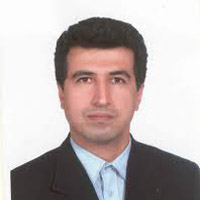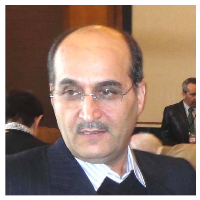A systematic review of the scientific literature of geomorphological heritage
The geomorphological heritage is a branch of geomorphology and is essentially geographic. The concept of geomorphological heritage includes landforms and processes that play a key role in understanding earth history, but also has a link with biological and cultural heritage. The geomorphological heritage is more than ever possible in a position to become a sustainable resource through geotourism and environmental education. The search, selection and systematic classification of studies allows for clear results and reproduction, and helps limit bias potential. Studies and popularity of geomorphological heritage are growing rapidly and require a comprehensive review of literature on the subject. Due to the rapid growth of research and popularity of geomorphological heritage and its use (geotourism, geopark, world heritage, etc.), a comprehensive review of the scientific literature of geomorphological heritage is necessary. However, given the increasing growth of geomorphological heritage over the past few years, there is a need for further understanding of the main themes and methods that exist in geomorphological heritage research and the potential gap of knowledge; therefore, the main purpose of this paper is the systematic review of published scientific literature. In the case of geomorphological heritage in order to answer two questions: (1) what knowledge has been produced in the scientific literature of geomorphological heritage; and (2) what trend is evolving in geomorphological heritage research.
In this research, the review of the geomorphological heritage literature carried out in three stages: (1) literary search; (2) selection of relevant studies; (3) classification and compilation of results. In this study, 207 research papers published in English have been thoroughly investigated. To ensure the quality of the review, only papers published in the search journals were reviewed. Search in the four largest online databases of scientific research, Scopus, Web of Science, Science Direct and Springer. Given that English is widely used in scientific research, only papers published in English are selected. The key words used to search are "geomorphological heritage" and "geomorphosite". First, book chapters, conferences proceedings, editorials, reviews, research notes, short communications, and reports were excluded from this survey. A total of 207 scientific-research articles have been selected for this review. Papers are also categorized according to their goals and topics, their research methods and their results. Summarizing and synthesizing the most important results provided, identifying the main research trends in the geomorphological heritage and the areas that require further research.
The results show an increasing concentration of research on geomorphological heritage. In the first decade, the number of papers published has been 1 or 2 articles per year, and since 2004 the number of published Papers has increased rapidly. The results show that researchers are more focused on identifying and evaluating geomorphological heritage. The geographical analysis of the study areas represents a global distribution that includes studies in 46 countries. About 48.38% of the studies focus on the potential for geotourism development of geomorphological heritage and only 4.35% emphasize management and conservation. About 64% of the papers are based on a combination of qualitative and quantitative data and 67% have used the combination of primary and secondary data for research. Primary data was mainly collected through fieldwork, including field survey and sampling. The results also show that researchers are less interested in geomorphological heritage stakeholders, such as tourists and local communities, and very few studies survey the geomorphological heritage in the context of sustainable development. In the present study, the history of geomorphological heritage studies has been studied separately in the three decades 1991-2000, 2001-2010, and 2011-2018. During these three decades of research, the most important published works and the development of geomorphological heritage studies have been discussed and analyzed. These three periods include the appearance of new concepts, the development of theory and methodology, and the focus on specific contexts of geomorphological heritage. The results of this literature review indicate that the subjects studied include identifying, inventorying, describing, assessing the potential of geotourism in study areas, conservation issues, tools for promote geomorphological heritage, modeling for geomorphosite and other methodological approaches as well as tourists' understanding and motivation. Regarding the study process, the main topics that need further research include the feasibility of a geomorphological heritage for inclusion in the World Heritage List, geoparks and national heritage, the management and conservation challenges of the geomorphological heritage, the positive and negative effects of geotourism on geomorphologic heritage and the main challenges faces of managers and different groups of stakeholders of geomorphological heritage. The stability of geomorphological heritage is one of the main goals that should be achieved by raising the awareness of tourists and local people of the importance of preserving the geomorphological heritage.
Considering studies of geomorphological heritage, more studies are needed to study how geomorphological heritage studies and related challenges are addressed and how to solve these challenges. Next challenges for the international community of geomorphologists and in general geologists are the creation of guidelines and principles for the development of geomorphological heritage scientific achievements. Management and conservation of geomorphological heritage in pursuit of sustainable development goals requires study by the scientific community. The proper management of the geomorphological heritage not only affects the proper characteristics of the sites but also determines their geographic boundaries, which Brilha (2018) also emphasizes on this subject. In addition, in none of the geomorphological heritage studies, so far, integrated management approach has not been considered and this approach has not been studied; therefore, moving towards integrated management of geomorphological heritage with the participation of researchers in the humanities and social / political sciences as well as economists and Communication science professionals are essential. However, other issues require further research to provide the knowledge and understanding necessary for the development and successful management of geomorphological heritage. According to the development trend of studies, at least in the next five years, research is expected to concentrate on the management and conservation challenges of geomorphological heritage and how to solve these challenges.
- حق عضویت دریافتی صرف حمایت از نشریات عضو و نگهداری، تکمیل و توسعه مگیران میشود.
- پرداخت حق اشتراک و دانلود مقالات اجازه بازنشر آن در سایر رسانههای چاپی و دیجیتال را به کاربر نمیدهد.



